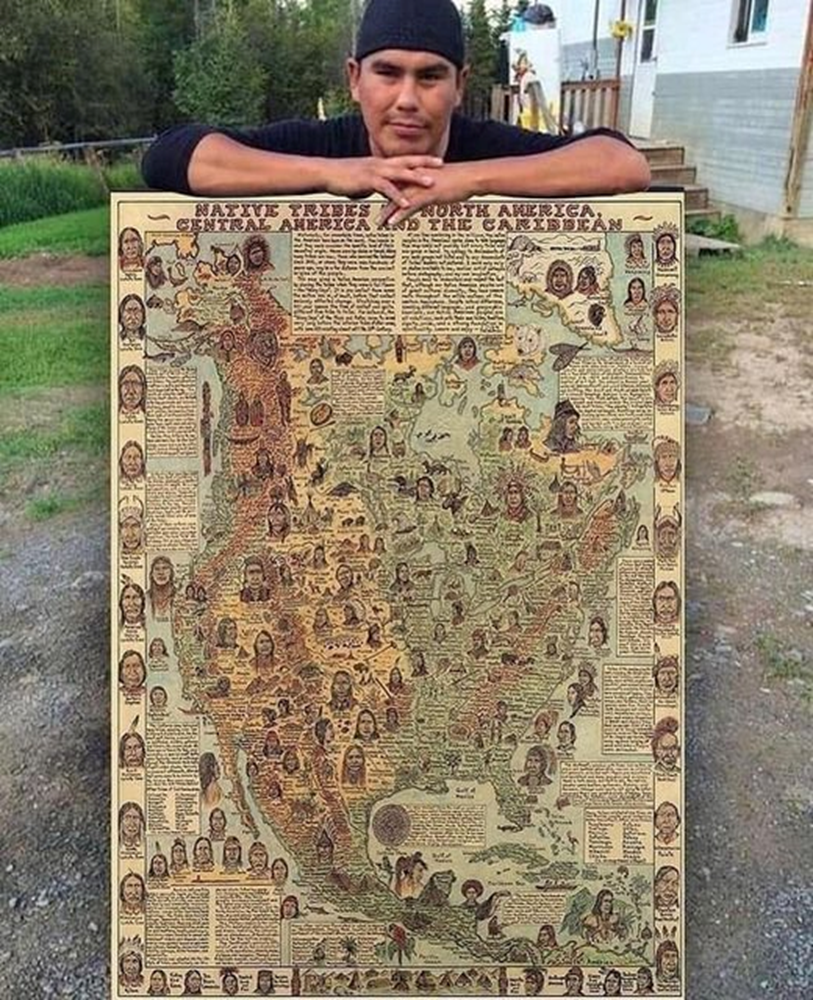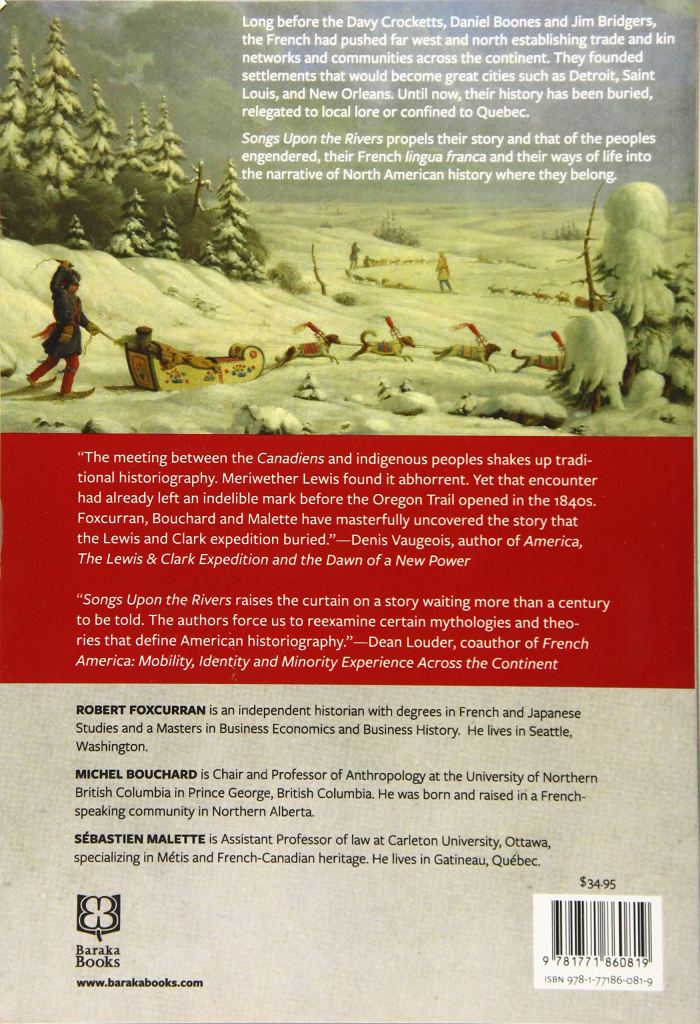
The ancestors of living Native Americans arrived in North America about 15 thousand years ago. As a result, a wide diversity of communities, societies, and cultures finally developed on the continent over the millennia.
The population figure for Indigenous peoples in the Americas before the 1492 voyage of Christopher Columbus was 70 million or more.
About 562 tribes inhabited the contiguous U.S. territory. Ten largest North American Indian tribes: Arikara, Cherokee, Iroquois, Pawnee, Sioux, Apache, Eskimo, Comanche, Choctaw, Cree, Ojibwa, Mohawk, Cheyenne, Navajo, Seminole, Hope, Shoshone, Mohican, Shawnee, Mi’kmaq, Paiute, Wampanoag, Ho-Chunk, Chumash, Haida.
The old map below gives a Native American perspective by placing the tribes in full flower ~ the “Glory Days.” It is pre-contact from across the eastern sea or, at least, before that contact seriously affected change. Stretching over 400 years, the time of contact was quite different from tribe to tribe. For instance, the “Glory Days” of the Maya and Aztec came to an end very long before the interior tribes of other areas, with some still resisting almost until the 20th Century.
At one time, numbering in the millions, the native peoples spoke close to 4,000 languages.
The Americas’ European conquest, which began in 1492, ended in a sharp drop in the Native American population through epidemics, hostilities, ethnic cleansing, and slavery.
When the United States was founded, established Native American tribes were viewed as semi-independent nations, as they commonly lived in communities separate from white immigrants.
“Before the Davie Crockets, the Daniel Boones and Jim Bridgers, the French had pushed far west and north establishing trade and kin networks across the continent. They were among the first to traverse what became known as the Oregon Trail. They founded settlements that would become great cities such as Detroit, Saint Louis, and New Orleans, but their history has been largely buried or relegated to local lore or confined to Quebec.” taken from Songs Upon The Rivers

After I traced my genealogy, I discovered several Daughter’s of the King in my bloodline.

“The meeting between the Canadians and indigenous peoples shake up traditional history. Meriwether Lewis found it abhorrent. Yet that encounter had already left an indelible mark before the Oregon Trail opened in the 1840s.” taken from Songs Upon The Rivers
“Songs Upon The Rivers raises the curtain on a story waiting more than a century to be told. The authors force us to reexamine certain mythologies and theologies that define American historiography,” said Dean Louder, coauthor of French America: Mobility, Identity and Minority Experience Across The Continent.
In this seminal work, Songs Upon The Rivers, Foxcurran, Bouchard, and Malette scrutinize primary sources and uncover the alliances between early French settlers and voyagers and the indigenous nations. When Native Americans were rounded up and put on reservations, the European women who had married Native American men, were also treated with the same disrespect their husbands received.
Likewise, French soldiers who came to settle what was then known as New Canada, under the authority of King of France, and who had married Native American women were also put on reservations if they chose to stay with these women.

This book is the buried history of the French-speaking Canadians and Metis from the Great Lakes and the Mississippi River who crossed this vast country to the Pacific Ocean.
If you would like this poster Native Tribes of North American, Central America and the Caribbean Vertical Poster, go to:
https://www.bestofnativeamerican.com/decor-poster-001
Much of this post is derived from this site.
Namaste
